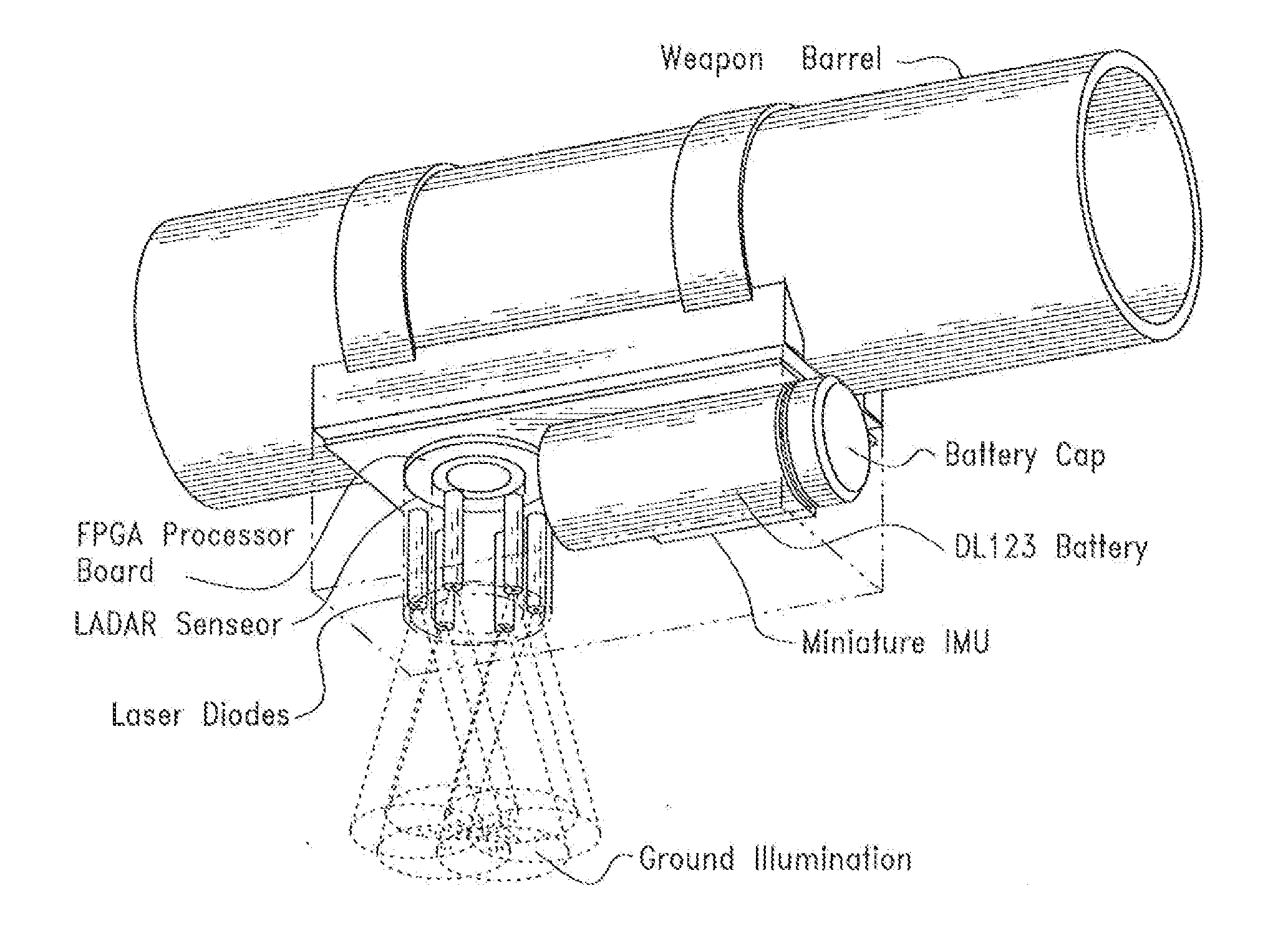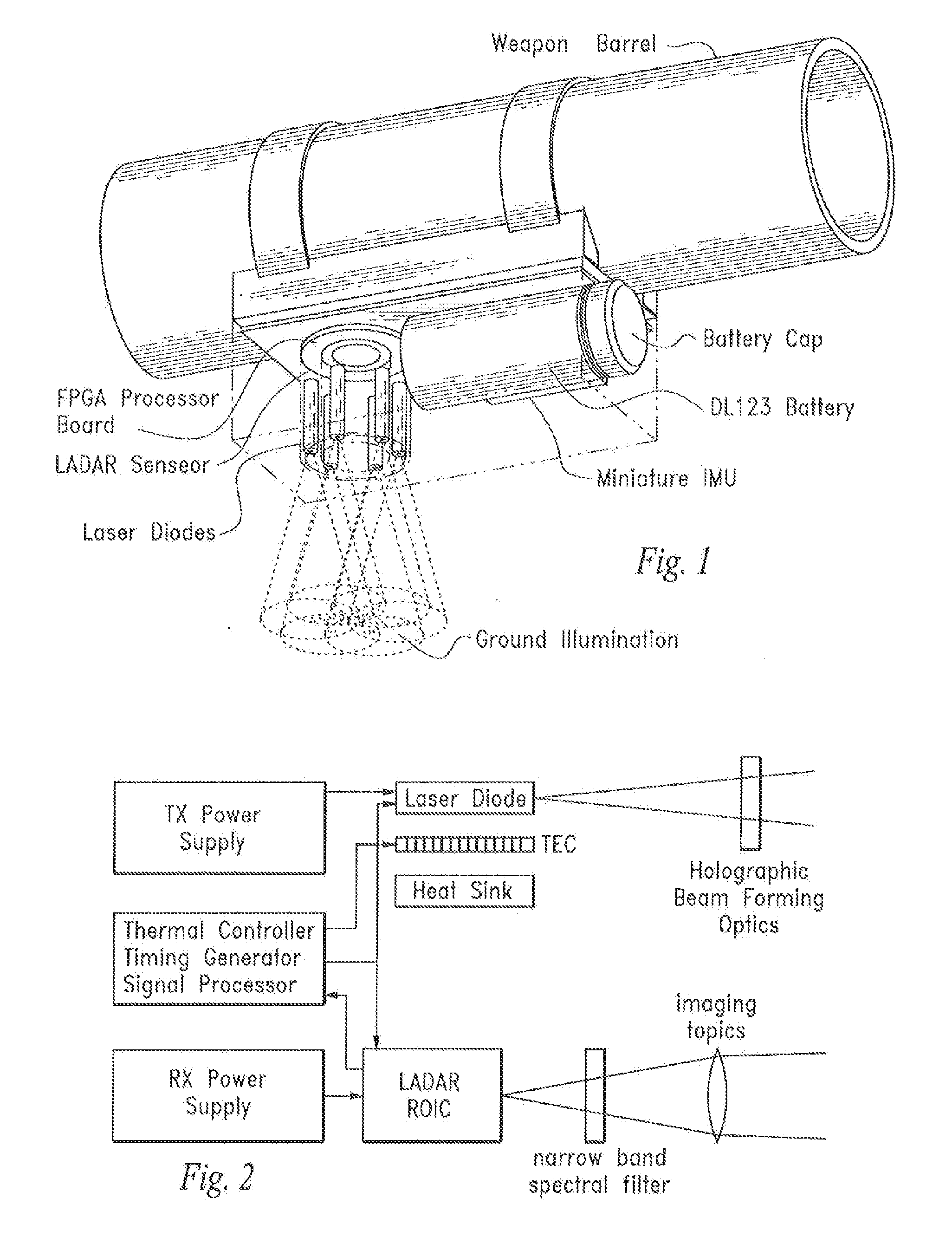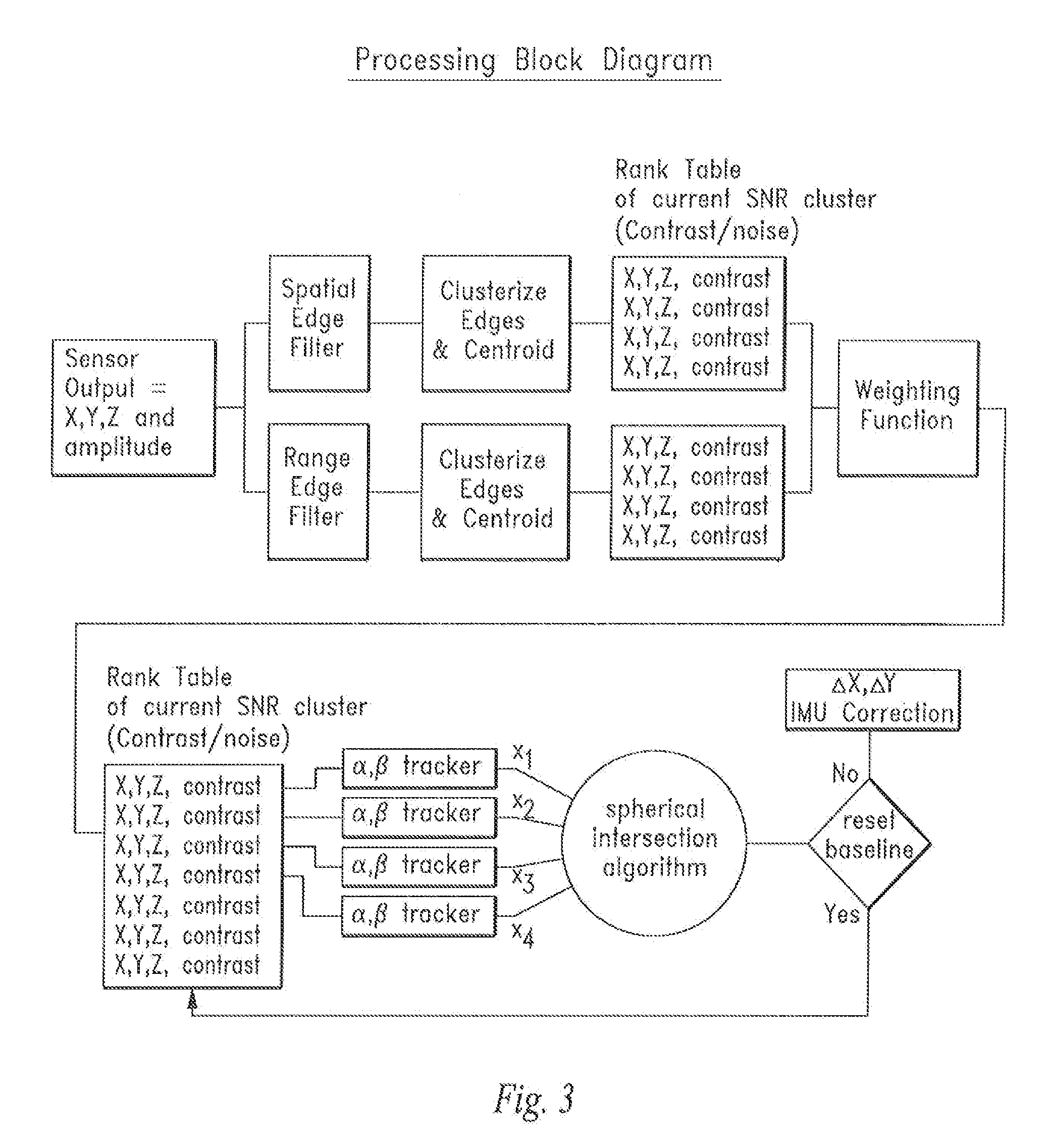Local Alignment and Positioning Device and Method
a positioning device and positioning technology, applied in the field of positioning devices and positioning devices, can solve the problems of inability to meet demanding military requirements, and large accumulated drift errors of long-loitered uas, etc., and achieve the effect of measuring the range very accurately
- Summary
- Abstract
- Description
- Claims
- Application Information
AI Technical Summary
Benefits of technology
Problems solved by technology
Method used
Image
Examples
first embodiment
[0118]In the first embodiment, all four phase samples are stored in the unit cell. At the end of the integration period these four signals are readout. The integration period could be as long as 33 milliseconds.
second embodiment
[0119]In the second embodiment, only one storage capacitor is used. The signal must be read from the unit cell at four times the transmitted modulation frequency but only to a secondary memory off of the unit cell but within the FPA. After a given integration period (typically 33 milliseconds), the multiple samples can be read out of the FPA.
third embodiment
[0120]In the third embodiment, the output of the amplifier is mixed with a small portion of a phase delayed transmitted waveform. The phase delay of the modulated signal that maximizes the output is the phase delay due to the range.
[0121]In the structured light embodiment, a commercial off the shelf or “COTS” FPA architecture can be used to obtain 3-D imagery for the system, i.e., a COTS visible sensor as an adjunct sensor and a micro-bolometer camera as the main 3-D imaging device.
[0122]FIG. 10 shows an FPA unit cell of a three transistor visible focal plane and a micro-bolometer unit cell.
[0123]The sensor architecture of the structured light 3-D imager embodiment is shown in FIGS. 11A and 11B.
[0124]A micro-bolometer camera is used to obtain both the structured light signal and the imagery signal. Two laser diodes are used to provide the illumination. One diode is transmitted through a diffraction grating. This produces the structure light as a pattern of bright spots. The second l...
PUM
 Login to View More
Login to View More Abstract
Description
Claims
Application Information
 Login to View More
Login to View More - R&D
- Intellectual Property
- Life Sciences
- Materials
- Tech Scout
- Unparalleled Data Quality
- Higher Quality Content
- 60% Fewer Hallucinations
Browse by: Latest US Patents, China's latest patents, Technical Efficacy Thesaurus, Application Domain, Technology Topic, Popular Technical Reports.
© 2025 PatSnap. All rights reserved.Legal|Privacy policy|Modern Slavery Act Transparency Statement|Sitemap|About US| Contact US: help@patsnap.com



